Stella’s successor will be cometing in the Solar challenge bearing the name Lux, or light. “We believe Stella is the number-one solar family car; our previous Stella was just the first of many to come. Since the name has generated quite some publicity already, we’d like to stick to that name”, says Tommie Perenboom of Solar Team Eindhoven (STE). ‘Stella 2013’ has been a visual inspiration to the new edition as well, as it turned out. But Stella Lux is “a little sexier, tougher, and more streamlined”, says Perenboom.
Another thing that has changed is the fact that Stella Lux has four regular doors - with automatic door locks. The previous version had to make do with two long, scissor-door type panels at the sides. And the protective steel roll cage, which was clearly visible in Stella, is now integrated into the carbon fiber body of the car.
Stella Lux’ roof protrudes slightly on the sides of the car. Because the car has a slanting front, the solar cells would have to be moved to the back. However, the Solar Challenge set limitations for the size of competing cars, and those would have required one entire row of solar cells to be removed from Stella Lux. “By having the roof protrude, we have been able to fit all solar cells anyway.”
What might be the most tactical change made to the solar car is the tunnel right under the chassis: a kind of ‘cove’ in the bottom panel that stretches over the entire length of the car. The tunnel reduces the frontal area of the car, and so the frontal drag. “That way, we can drive more energy-efficiently.”
Inside the car, on top of this aerodynamic tunnel, there’s a long tube that runs from front to back. The tube contains the battery pack, among other things: sixty kilograms of lithium batteries, 1,224 cells in total. The tube also includes cup holders, the gearshift, the dashboard, and a ‘hablet’: an iPad with haptic functionalities, which is safer to control while driving.
Mid-August, the car will be put on a plane to Australia, and join the World Solar Challenge in October. The team will leave by late August or early September. The aim of the race through the Australian outback, as Perenboom nicely reproduces: "Showing we can build a safe and reliable car". Then admits: "We secretly hope to win, of course. We've built a very solid car, not a go-kart. It has been put together really well and has been well thought out. I really think we stand a chance."
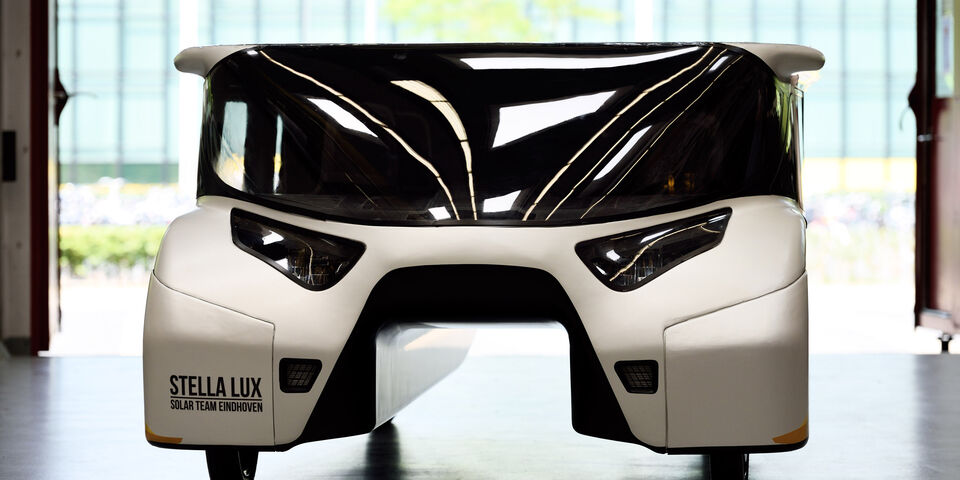

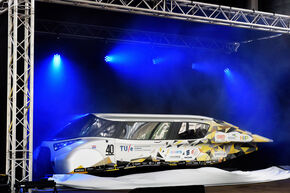
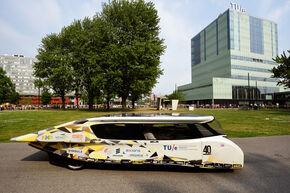
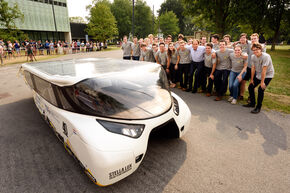
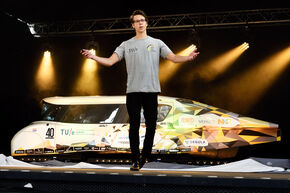
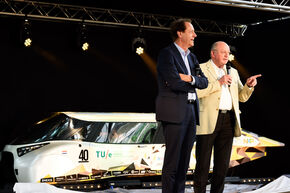
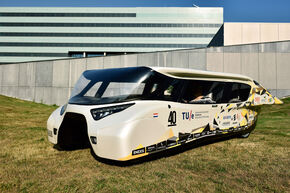
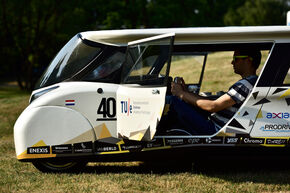
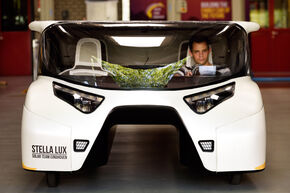
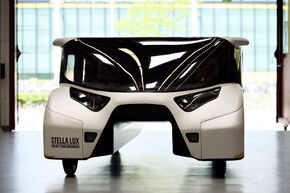
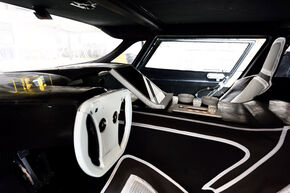
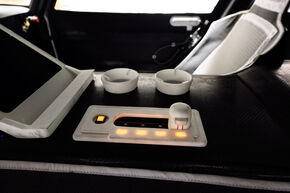
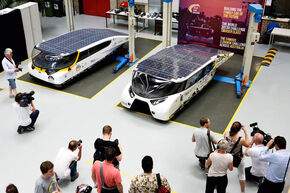
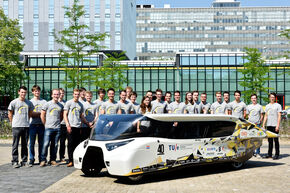
Discussion